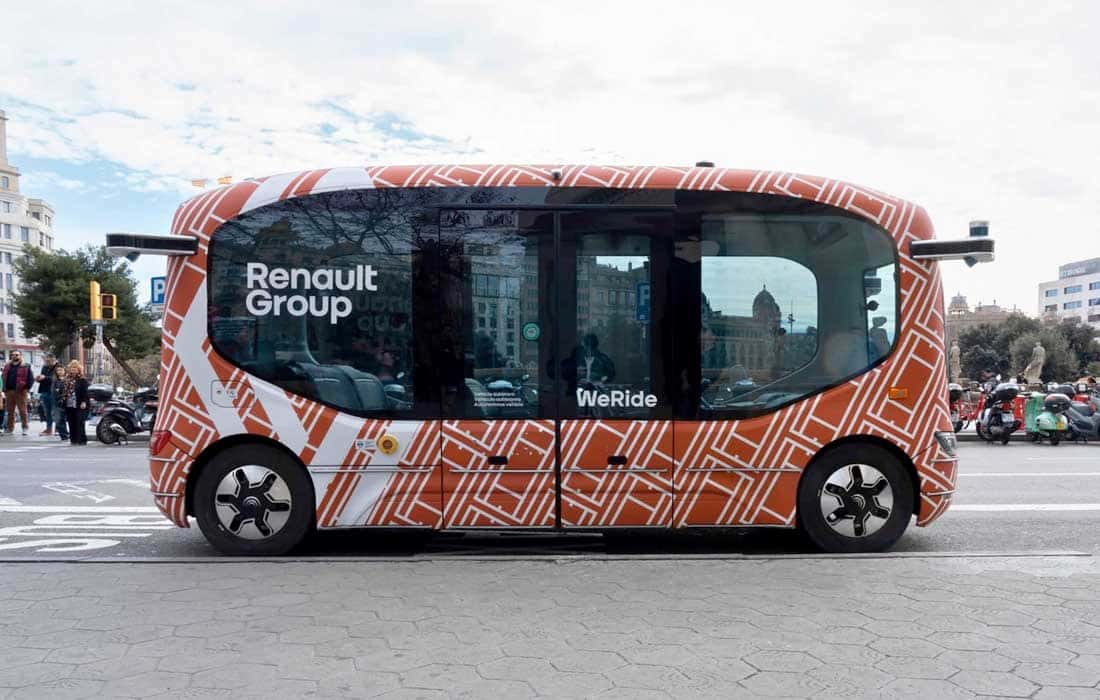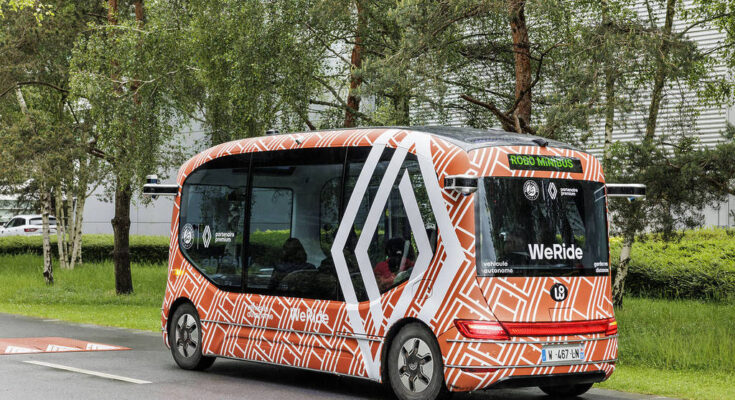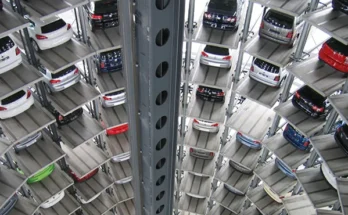Renault has taken a significant step in the evolution of autonomous public transport by launching a driverless minibus trial in Barcelona. The company is offering free rides to commuters as part of an innovative initiative aimed at advancing self-driving technology and promoting sustainable urban mobility. This cutting-edge electric minibus is expected to pave the way for Level 4 autonomous public transport solutions across Europe.
A Glimpse into the Autonomous Minibus

Developed in partnership with WeRide, a leading autonomous driving technology company, the minibus is designed to navigate Barcelona’s busy streets with high precision. The vehicle operates on a designated 2.2-kilometer (1.3-mile) circular route in the city center, stopping at four key locations to pick up and drop off passengers. The trial seeks to evaluate the feasibility of integrating such technology into public transportation networks while ensuring safety, efficiency, and convenience for commuters.

Advanced Technology for Safer Navigation

The Renault driverless minibus is equipped with state-of-the-art technology to ensure seamless and secure travel. It features 10 high-resolution cameras and eight lidars, which work together to detect obstacles, monitor traffic conditions, and respond to dynamic urban environments. These sensors enable the minibus to make real-time decisions, such as stopping for pedestrians, adjusting speed in traffic, and maneuvering safely around other vehicles.

Unlike traditional public transport vehicles, which rely on human drivers to interpret road conditions, this autonomous minibus operates entirely on artificial intelligence and machine learning algorithms. These systems continuously analyze data from the surrounding environment, allowing the vehicle to adapt to various driving scenarios with minimal human intervention. The minibus is also connected to a remote supervision system, ensuring that operators can step in if necessary.

Performance and Sustainability
Beyond its autonomous capabilities, the Renault minibus is designed to be an environmentally friendly mode of transport. As an electric vehicle, it emits zero greenhouse gases, contributing to cleaner air in urban areas. The minibus boasts an impressive range, capable of traveling up to 120 kilometers (75 miles) on a single charge. This ensures that the vehicle can operate for extended periods without requiring frequent recharging, making it a viable alternative to conventional public transport.
With a top speed of 40 km/h (25 mph), the minibus is optimized for urban mobility, balancing speed with safety. The limited speed allows for smooth integration with city traffic while reducing the risk of accidents. Additionally, its design prioritizes passenger comfort, ensuring a pleasant and stress-free ride for commuters.
Renault’s Vision for Level 4 Autonomy
Renault’s ultimate goal is to develop Level 4 autonomous vehicles that can function independently within specific operational areas without human intervention. Level 4 autonomy signifies a significant advancement in self-driving technology, as the vehicle can operate autonomously under most conditions, only requiring human oversight in exceptional circumstances.
This pilot program in Barcelona serves as a crucial testing ground for Renault’s long-term vision. By gathering data on real-world performance, traffic interactions, and commuter feedback, the company aims to refine its technology and accelerate the deployment of autonomous public transport solutions across European cities.
Challenges and Future Prospects
Despite the promising potential of Renault’s driverless minibus, there are still challenges to overcome before widespread adoption becomes a reality. Regulatory frameworks for autonomous vehicles vary across countries, and ensuring compliance with safety standards remains a priority. Additionally, public perception and trust in driverless technology must be strengthened to encourage widespread acceptance.
Nevertheless, the success of this trial could mark a turning point in the evolution of urban mobility. Autonomous minibuses have the potential to reduce congestion, lower emissions, and provide a more efficient and accessible mode of transportation. As technology continues to advance, Renault’s innovative approach may set a new standard for smart cities and sustainable public transport.
Conclusion
Renault’s driverless minibus trial in Barcelona is a bold step towards the future of autonomous public transportation. By leveraging cutting-edge technology, the company is demonstrating the feasibility of integrating self-driving electric vehicles into urban transit systems. If successful, this initiative could revolutionize public transport across Europe, offering a safer, greener, and more efficient alternative to traditional commuting methods. As the trial progresses, the insights gained will play a crucial role in shaping the next generation of autonomous mobility solutions.



